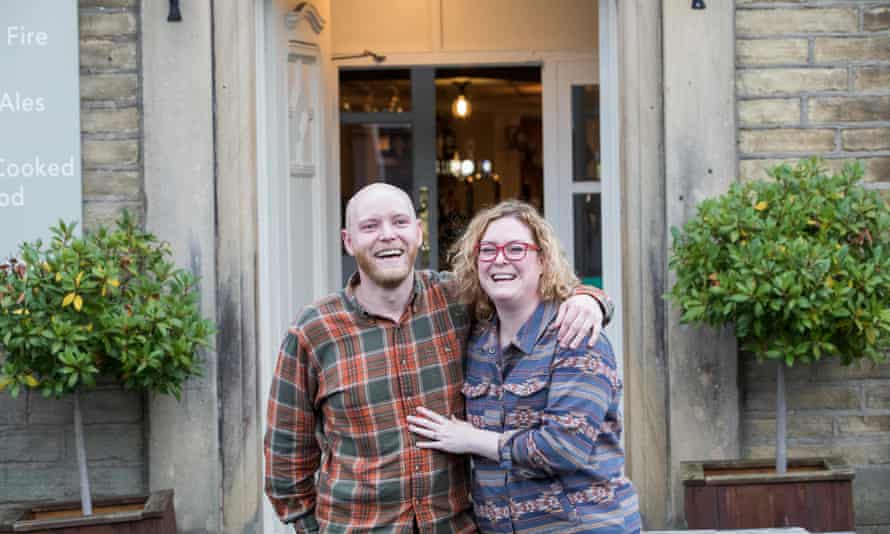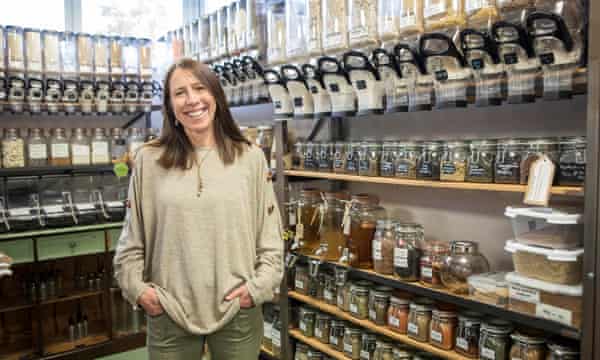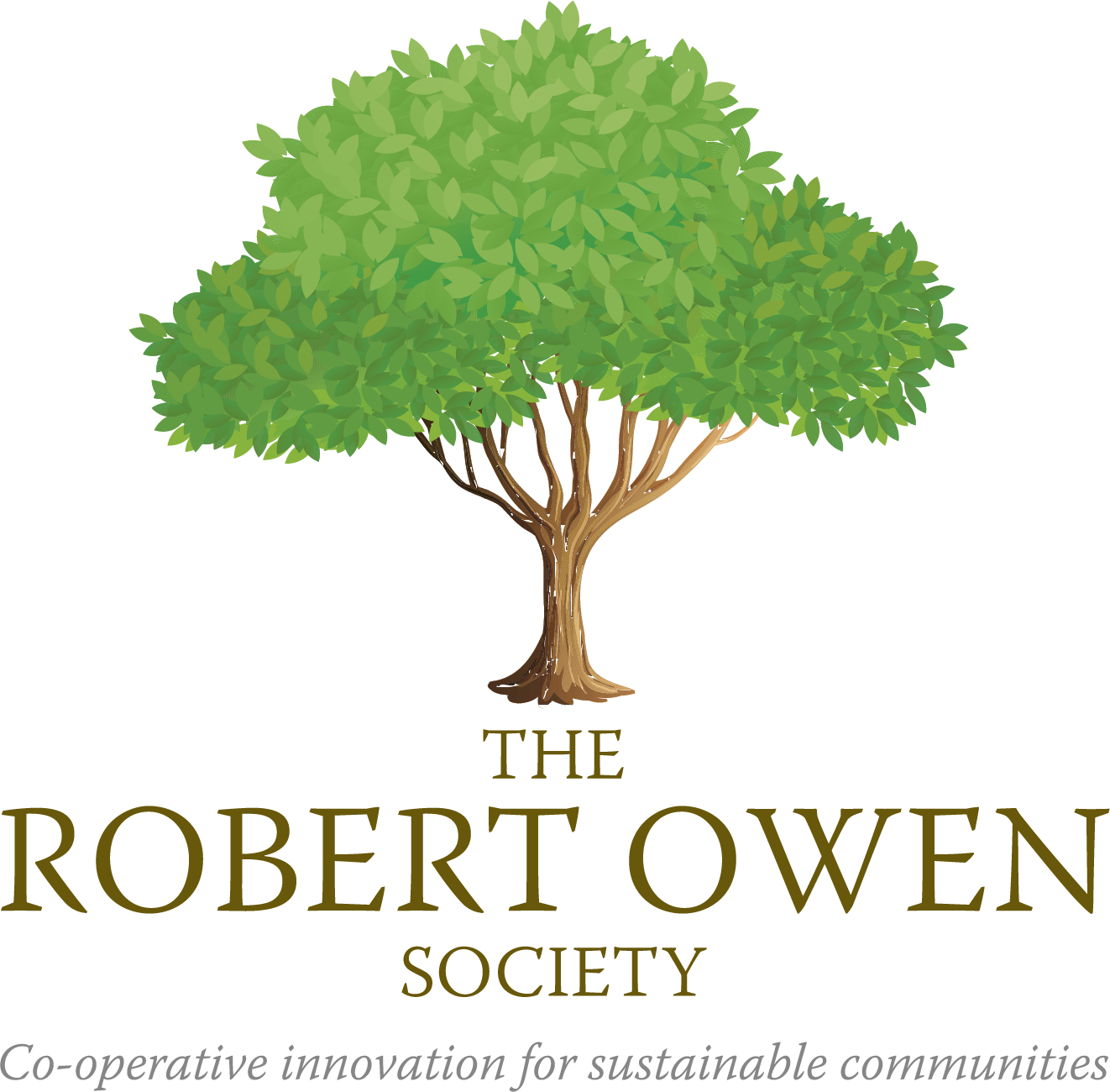Trawden’s residents raise over half a million pounds to purchase their local after it was listed as an asset of community value

Gareth Rubin@GarethRubinSun 21 Nov 2021 08.00 GMT
It’s 6pm on a Thursday in November in the Trawden Arms in Lancashire and the pub is already so busy that the departure of the last bottle of pinot is announced from the bar.
The reason for the crowd? It is the grand reopening of the village’s 126-year-old hostelry and this is a particularly meaningful moment for the residents of Trawden because they bought the pub.
And it’s not just the local watering hole they acquired: the residents of Trawden have also communally bought, reopened and operated, one by one, the shop, the library and the community centre, making them the first village in Britain to do so. The triumphant reopening of the Trawden Arms this month after a long period of closure completed the set.
“Any village wants a pub and a shop,” says Paul Verity, as he orders a meal for his wife, Emma, and their daughters, Ella, nine, and Alice, six. “The fact that they’ve been saved from doom for the community is fantastic.”

To get here, the village of 2,000 people raised £520,000 to buy the Trawden Arms, completing the purchase a few weeks ago, and now it will be leased to the new tenants, Jo Stafford and Adam Young, who will run it on a commercial basis but also as a community focal point.
“If we’d lost it, it would have been devastating,” adds Emma Verity, as the strains of DeBarge’s 1985 R&B hit Rhythm of the Night fills the room.https://interactive.guim.co.uk/uploader/embed/2021/11/trawden-map/giv-825G26WCNwRylkn/Advertisement
The pub had been put up for sale – which these days generally means being turned into holiday homes for absentee owners – but the villagers successfully applied to have it listed as an asset of community value, which prevented developers swooping just long enough for the locals to raise the cash themselves.
It sits opposite the community centre and its neighbouring shop and library, all of which have also been bought by the villagers over the past seven years. They are staffed from a pool of 120 volunteers working two-hour shifts.
In the library, white-haired ladies have been poring over faded photographs of the village taken during their youths; while, on the other side of the building customers buzz around the shop, where the shelves are stuffed with fresh local produce, tubs of vegan marshmallows and serve-yourself jars of everything from nuts to bleach.
Molly Ralphson leans against a sign apologising for the lack of eccles cakes, due, apparently to the departure of an “artisan baker”, and promising resumption of this service as soon as another supplier is found.

Ralphson grew up in the village and is communications officer for the trust that bought the Trawden Arms. “I felt awful when I heard the pub was closing,” she says. “A village loses its heart and soul without a pub. You go there because there’s always someone you know.”
They were aided in their campaign to save it by the Plunkett Foundation, which helps breathe new life into affected areas by supporting community businesses.
It’s an uphill struggle. According to a recent report from the British Beer and Pub Association, 2,000 pubs permanently closed during the first year of lockdown. Many were in rural locations, leaving small communities without a space to meet and socialise, leading to greater isolation.
Chris Cowcher, head of policy at the Plunkett Foundation, says that with rural pubs and shops closing – along with other factors such as poor internet connectivity and lack of prospects for young people – there’s a danger that villages across the country could become “dormant communities”. But “the likes of Trawden show we can safeguard the sense of living in an active community” he adds.

Advertisementhttps://645ff2beee5b37457d1296af6415b702.safeframe.googlesyndication.com/safeframe/1-0-38/html/container.html
If there’s a father-figure in Trawden’s collective effort to keep the village alive, it’s Steven Wilcock, who kicked everything off in 2014 when he campaigned to buy the endangered community centre from the borough council, which was about to close it.

The centre had been a lively place in his parents’ day with tea dances and whist games, he recalls. But “life just changed” and people stopped using it. And he worried its closure would be the first harbinger of the village dying out as a community – the last shop was near to shutting down, the village’s second pub had already been turned into housing and four of the village’s five churches and chapels had been sold.
“We’d lost our community spirit. It was all just so sad,” Wilcock says. But he and the other residents refused to take the imminent loss lying down. And that’s when the fightback began.
“Now we’ve turned everything around and that spirit is now back,” he says, looking up at the fairy lights installed for Christmas. “And it’s been a lifeline to people – a lot of the volunteers live on their own and used to spend each day staring at the same four walls. I remember one lady who said to me, ‘This place has saved my life’ because she had been so unhappy on her own. She’s a different person now. This has brought the community together and I’m so proud.”
The Guardian 21.11.2021
